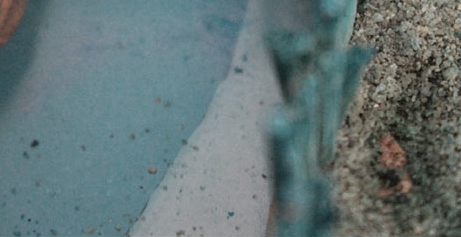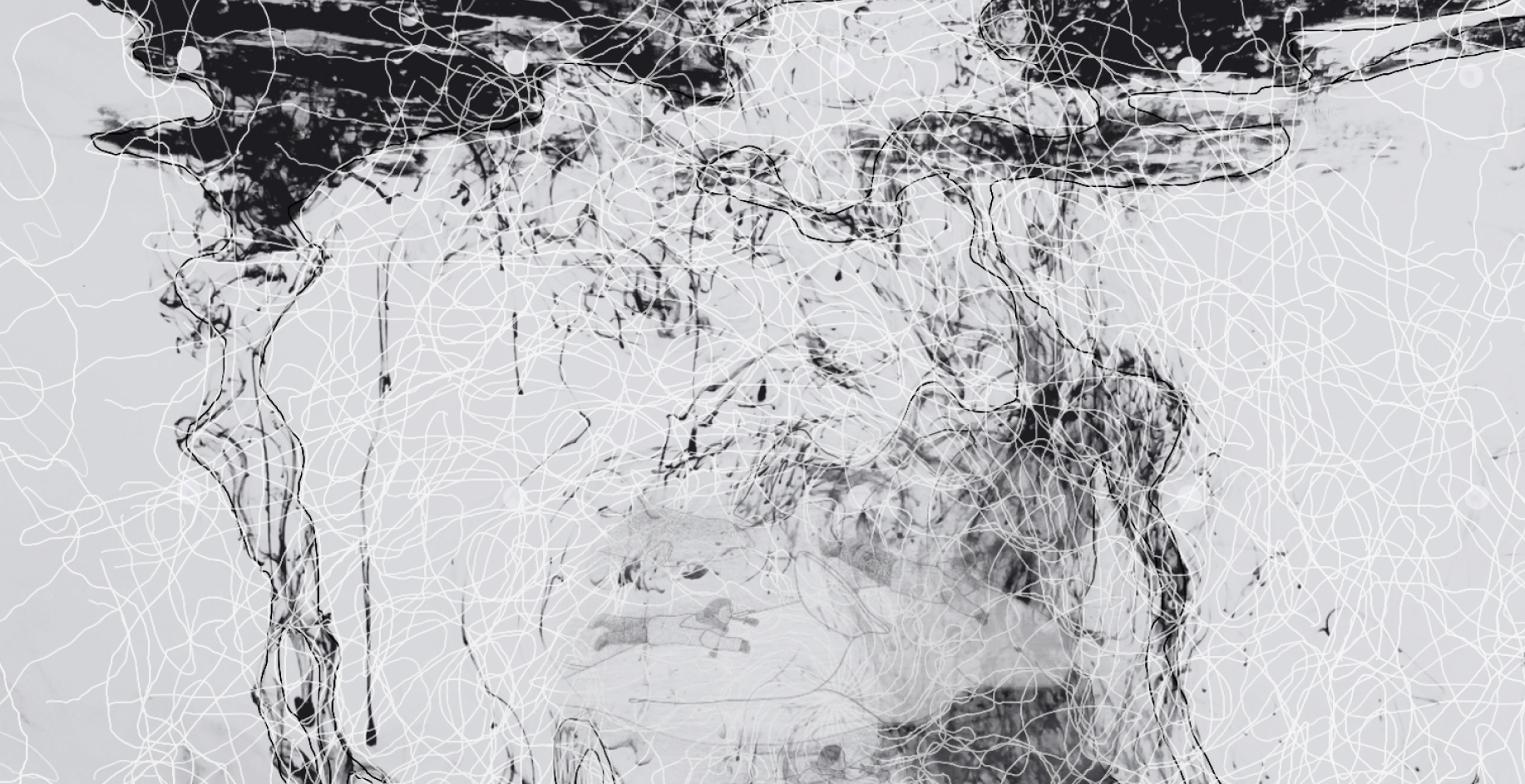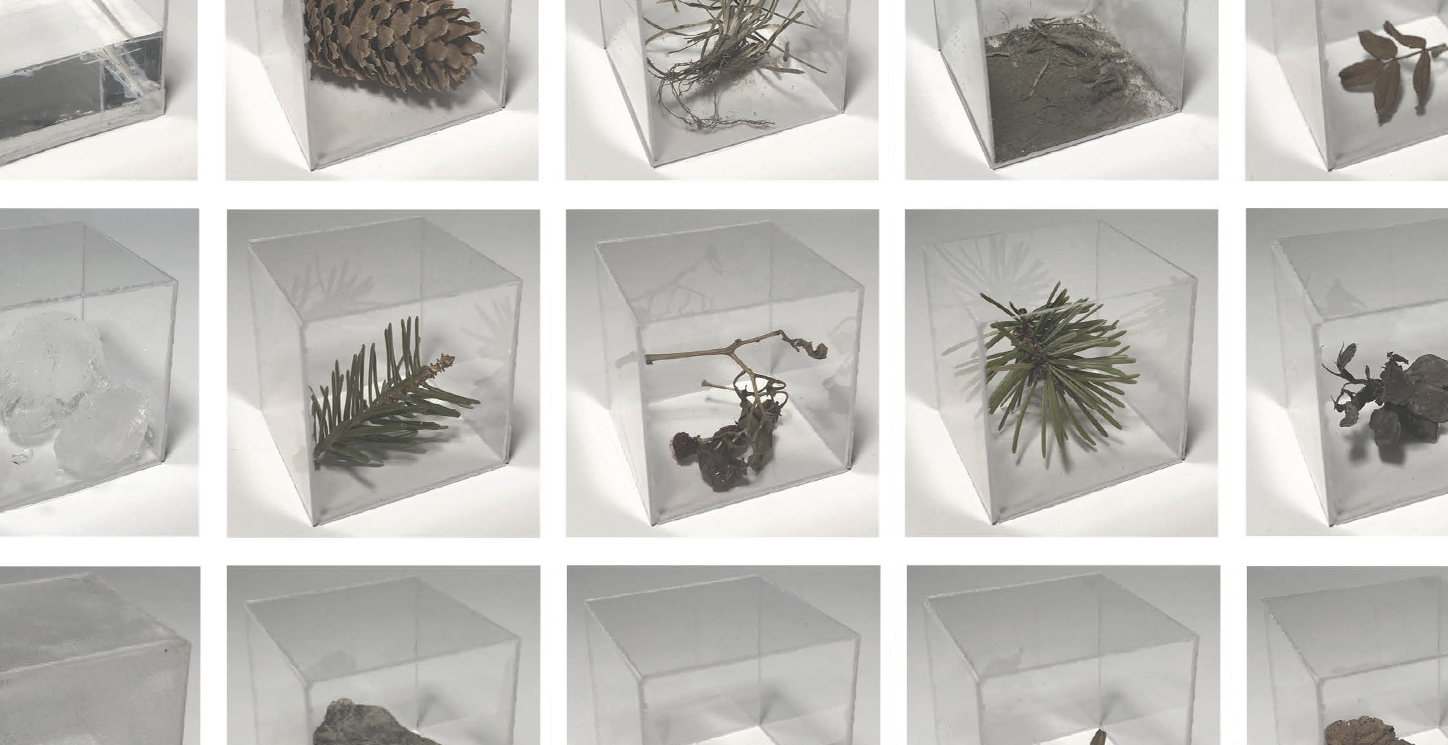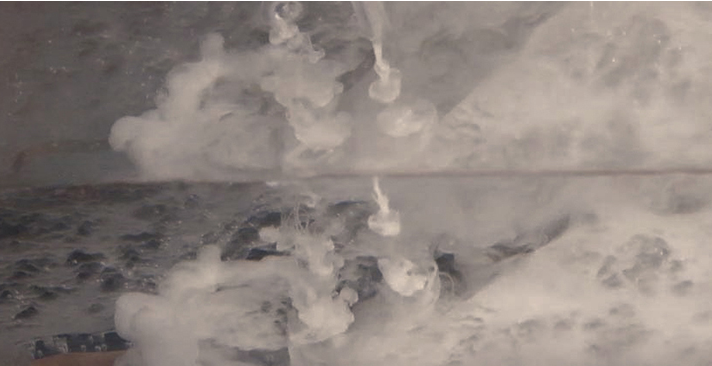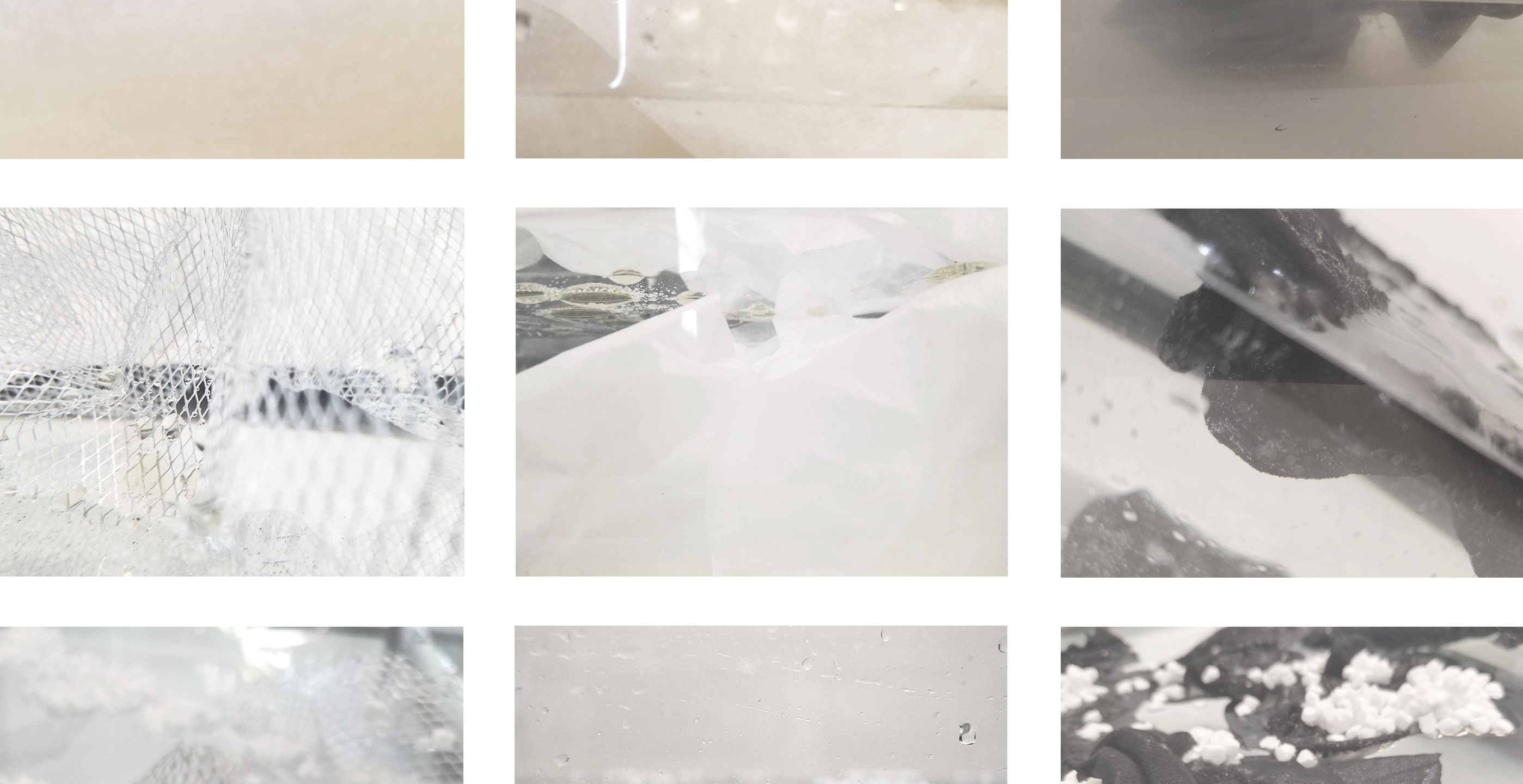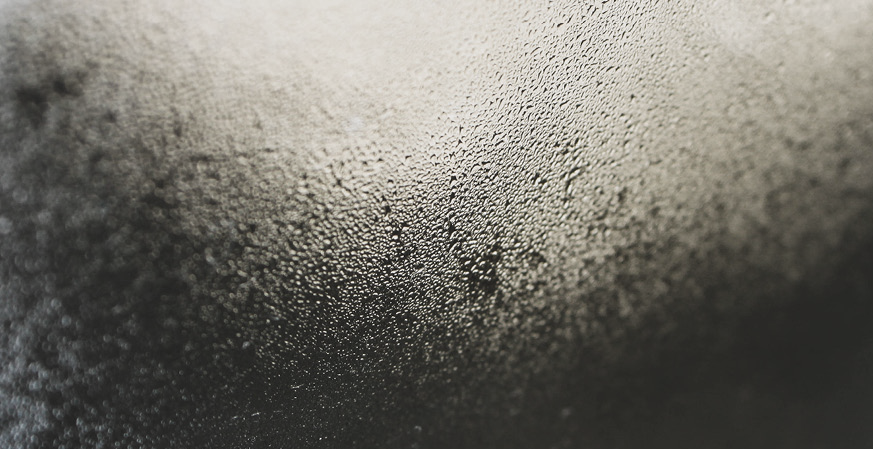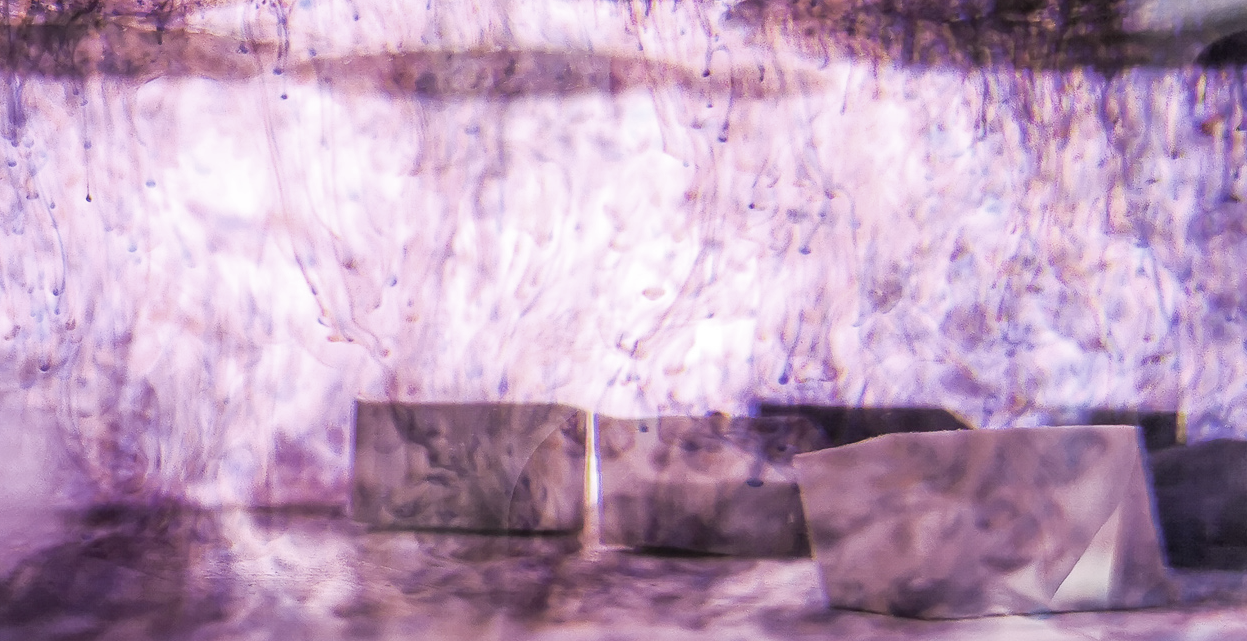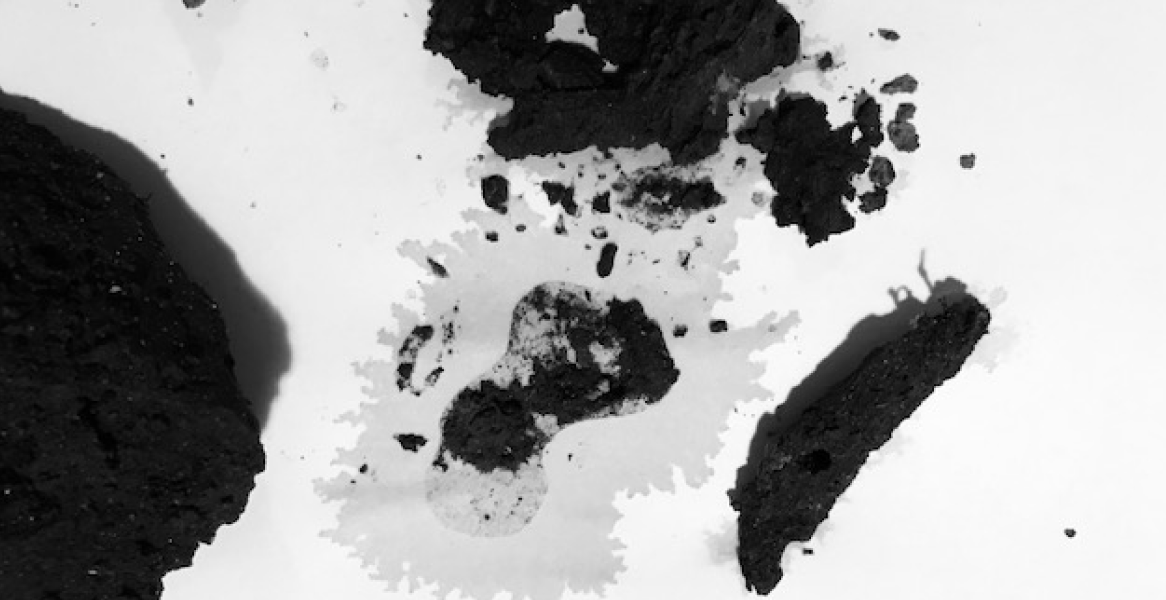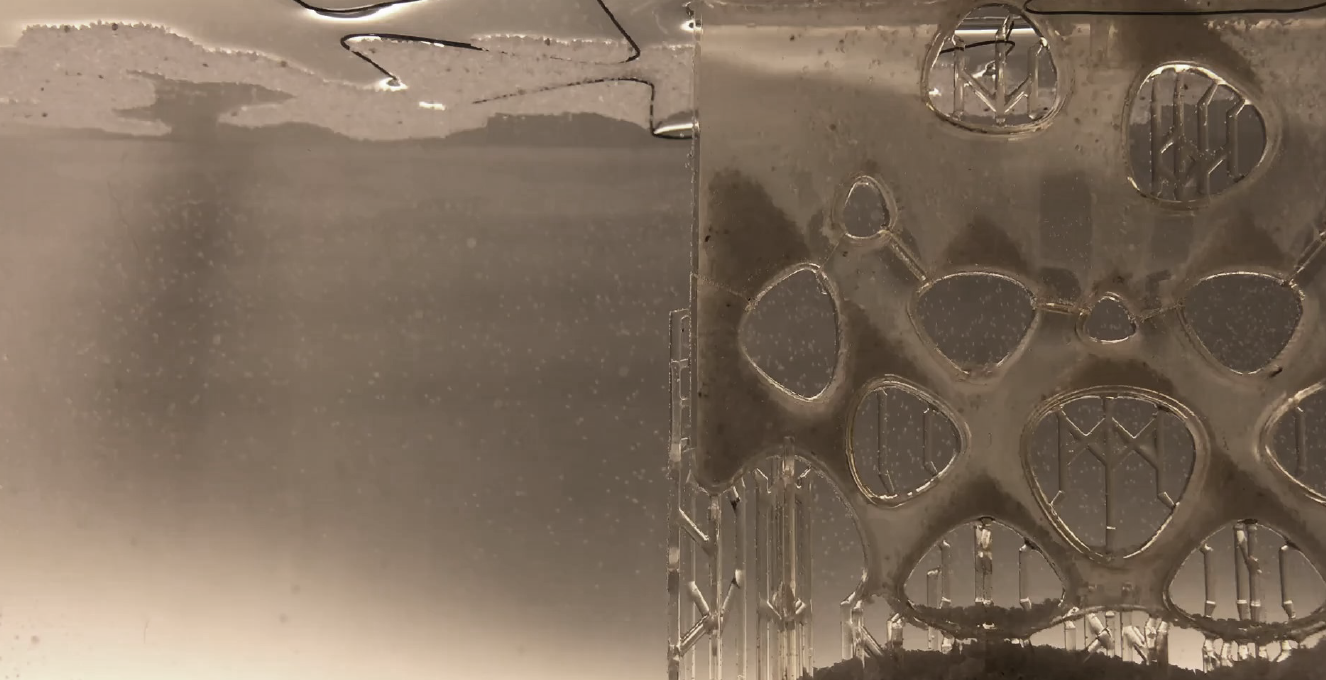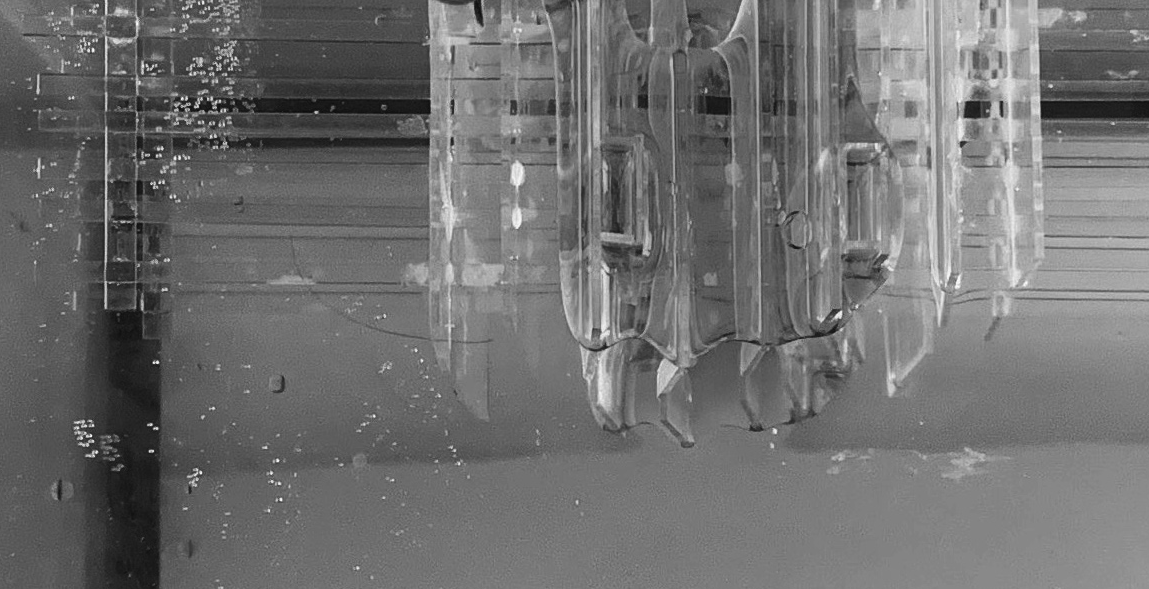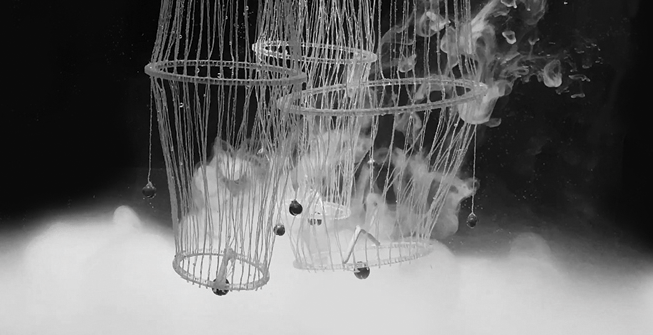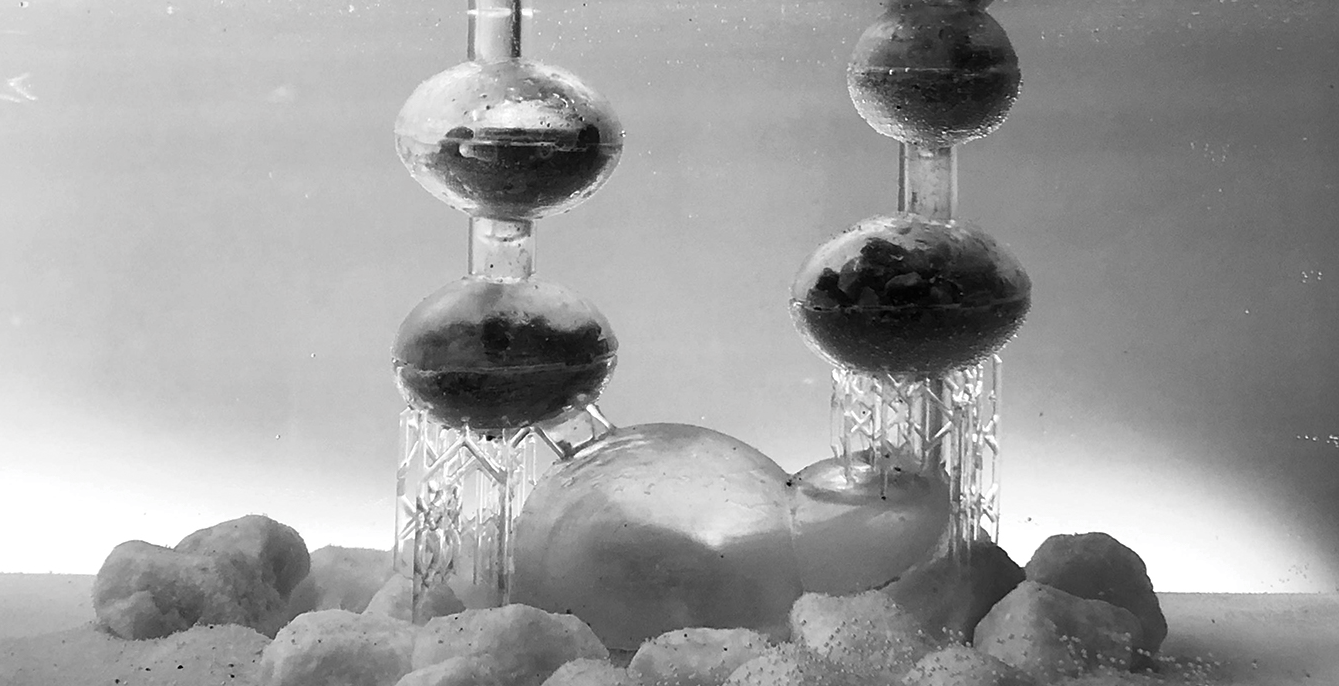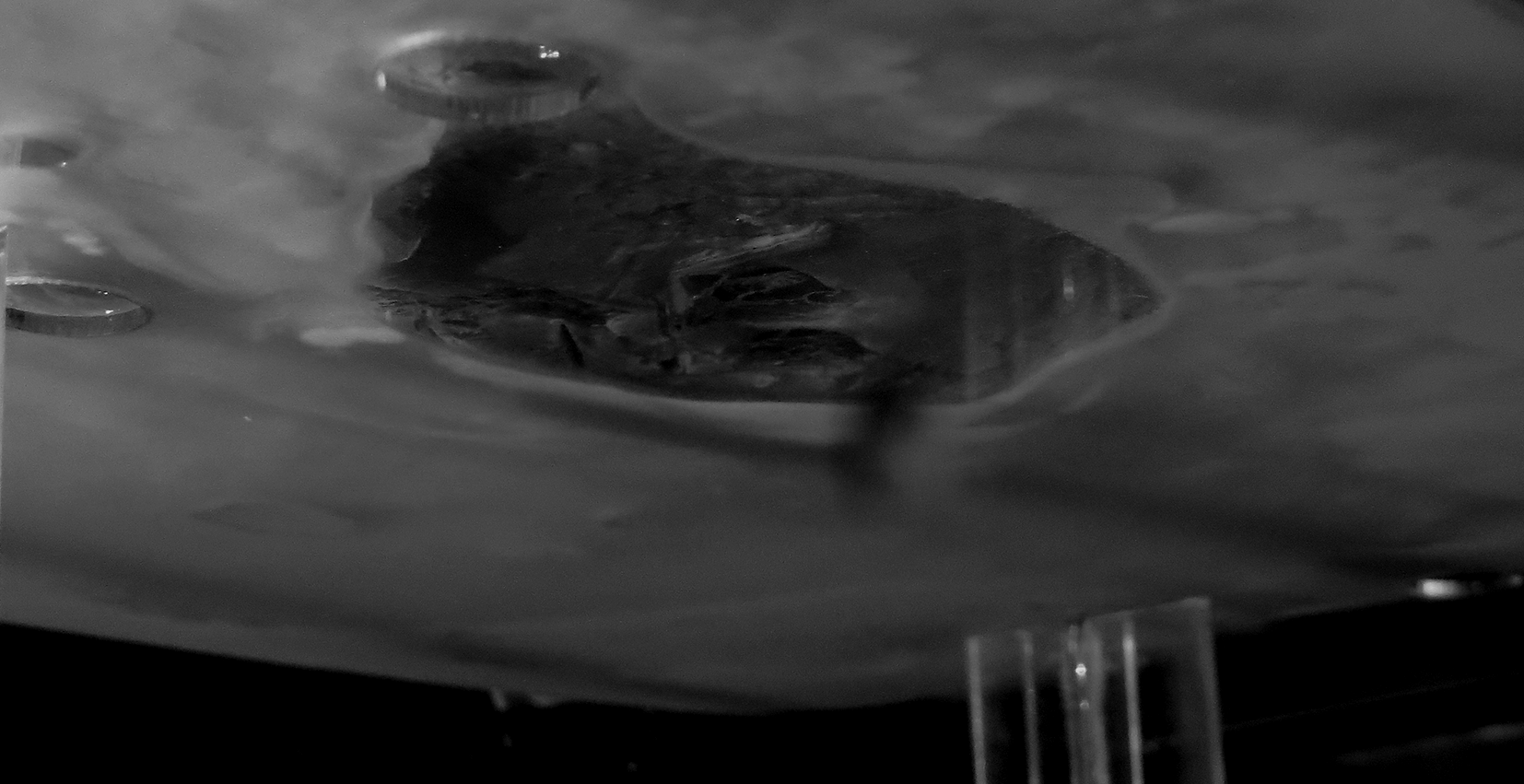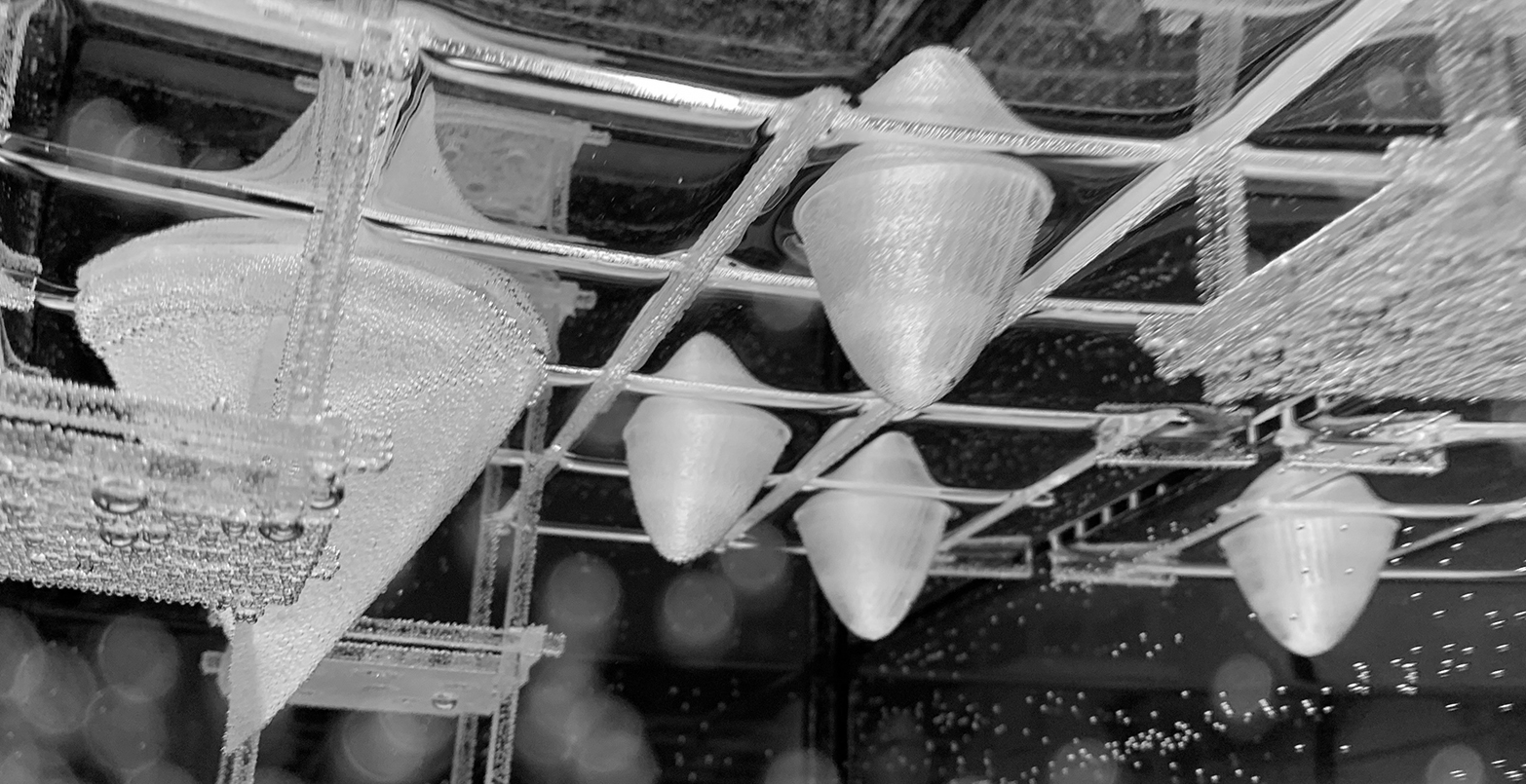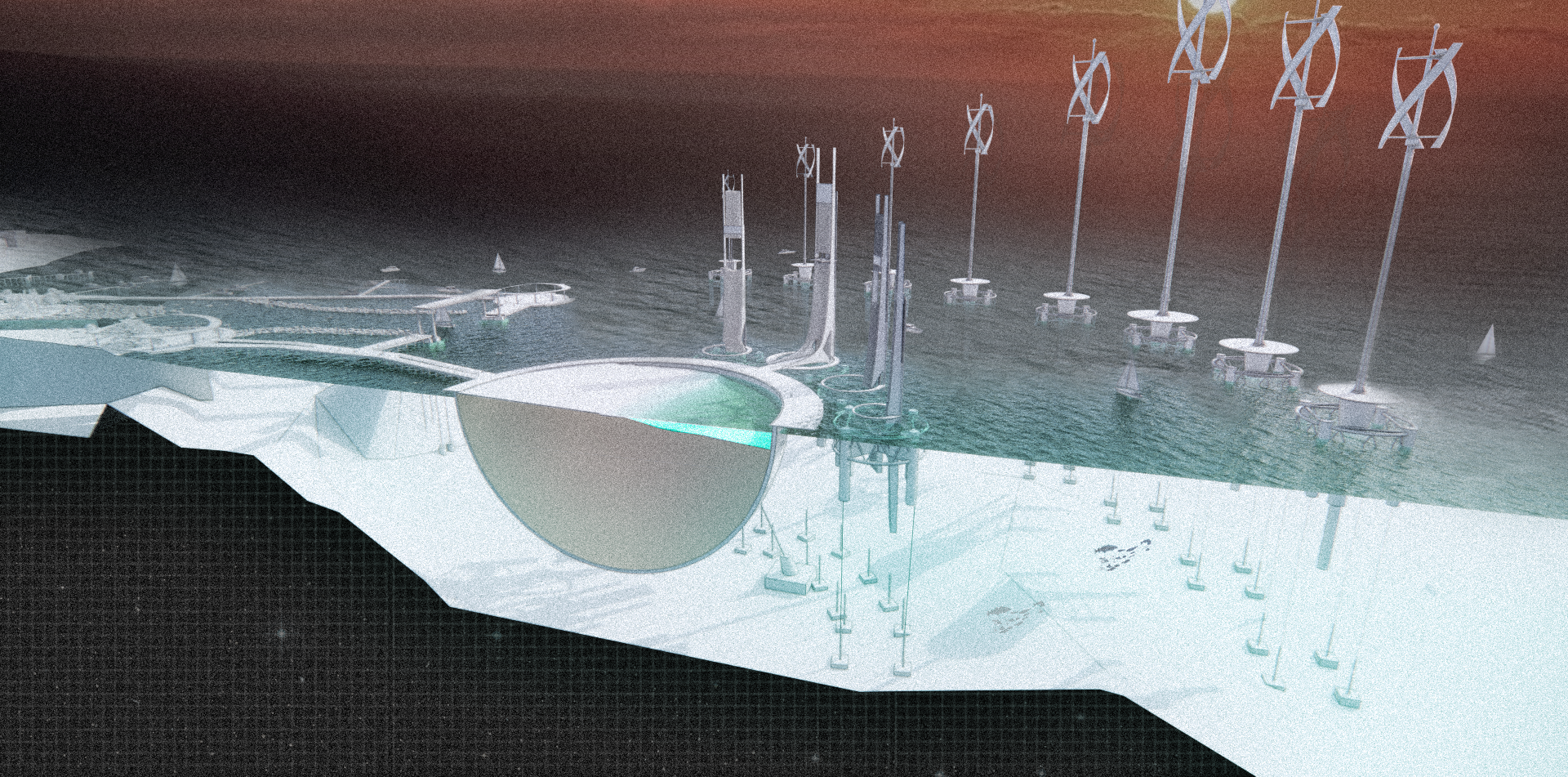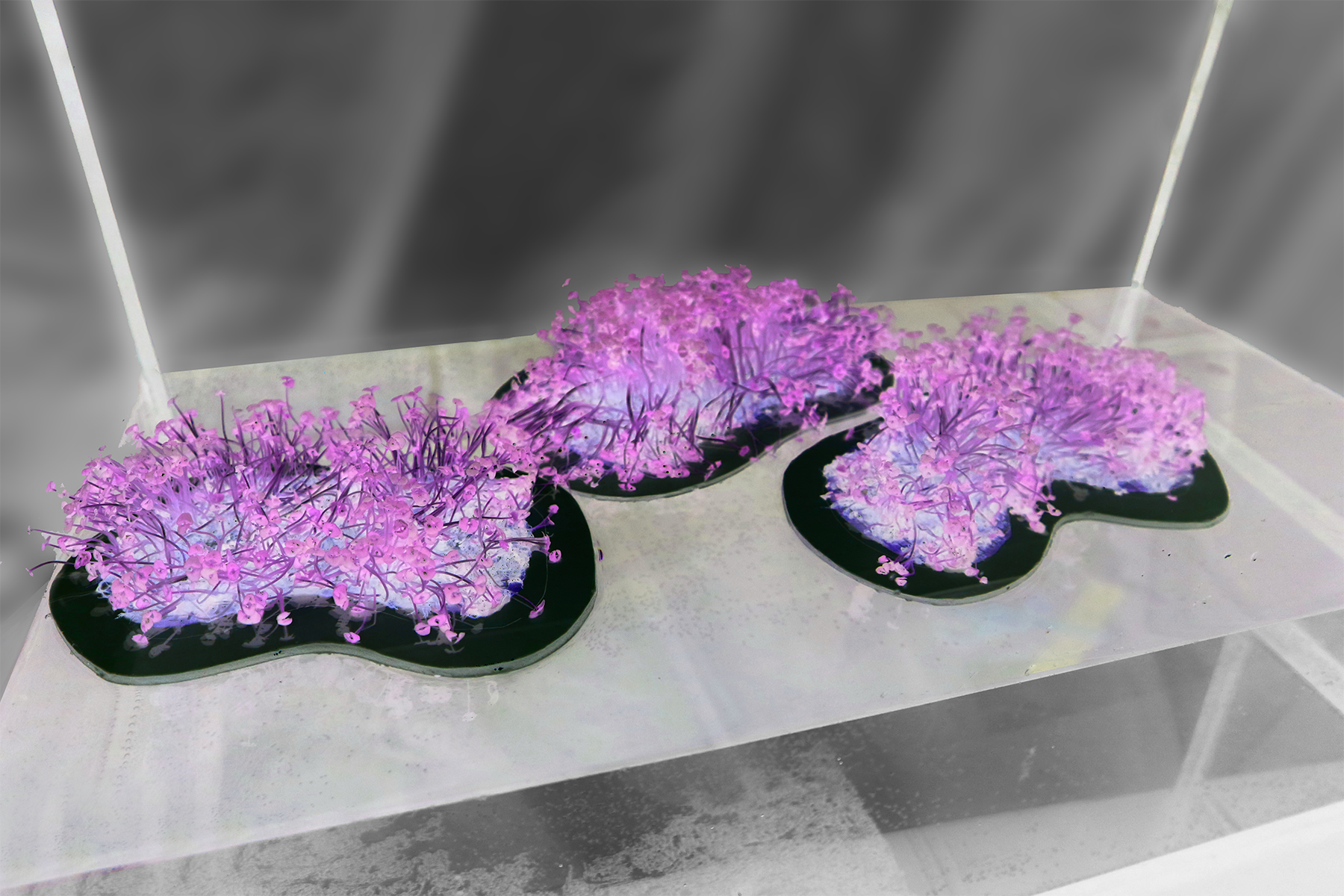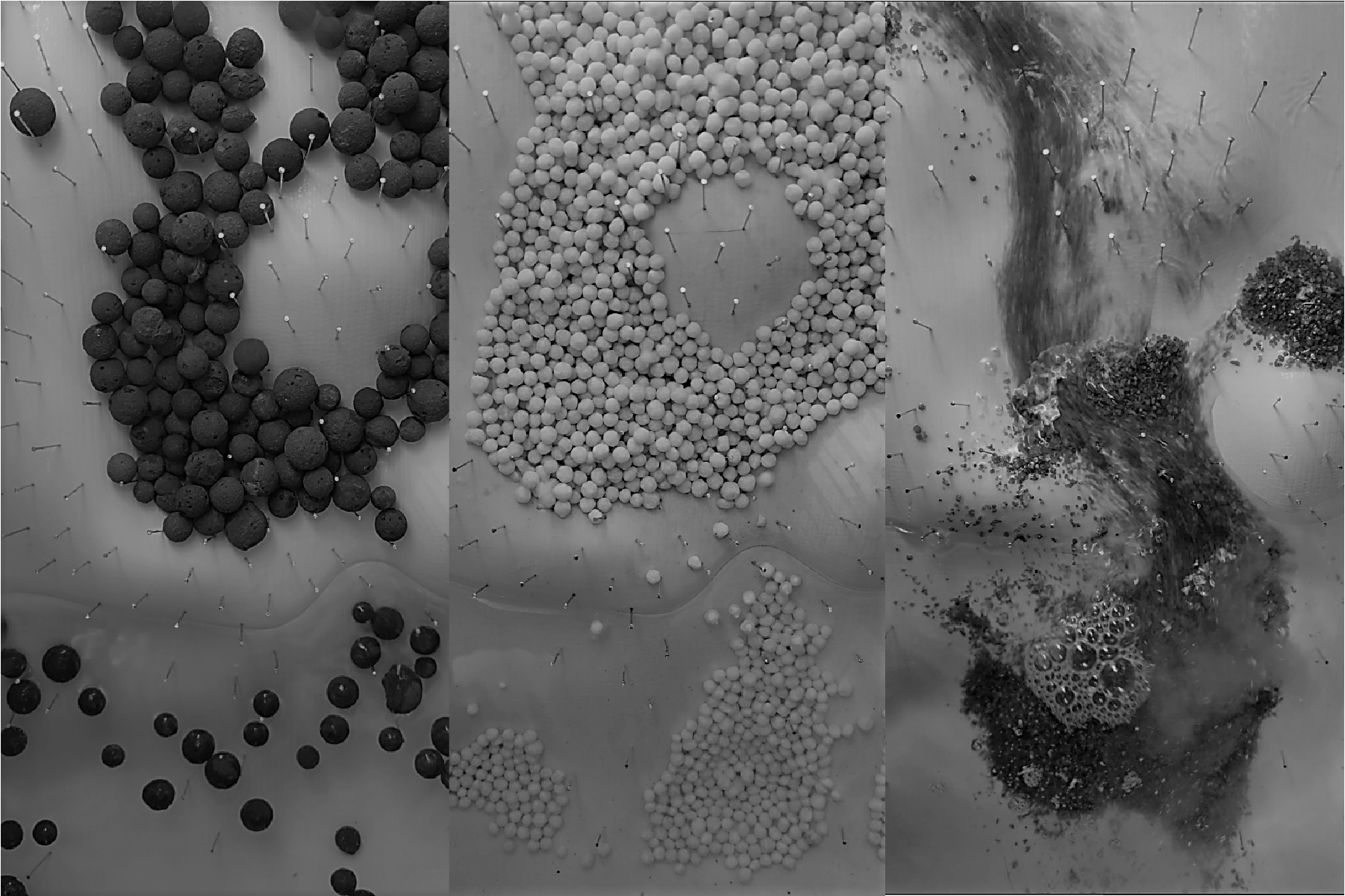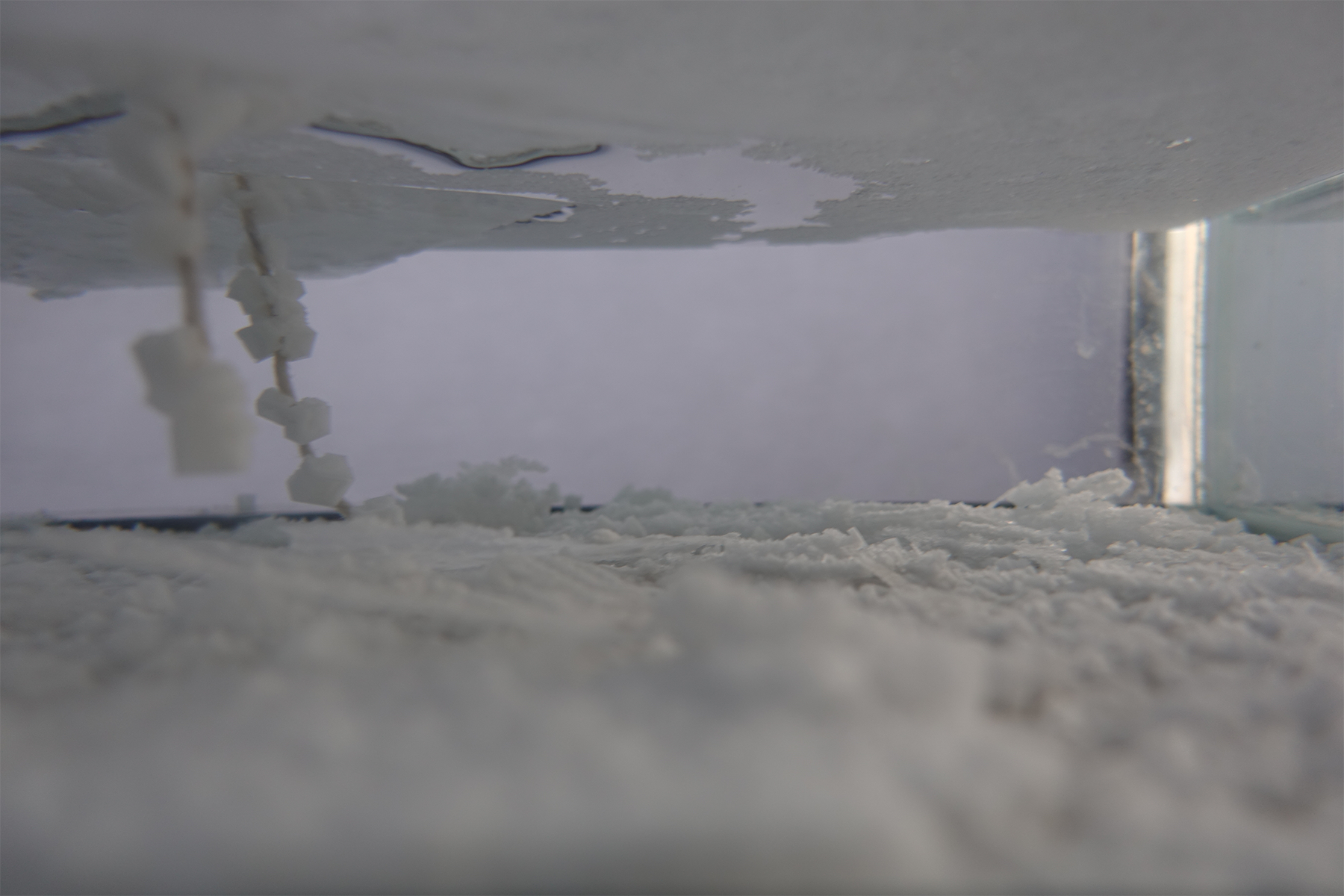Joel Tremblay
Tank Worlds : Miniaturising the Gigantic
Temporal Topographies
The original intentions of the tank model were to explore the atmospheric and environmental qualities one might experience when out on a frozen lake in the winter. Ice fishing is an interesting topic to explore as it is an activity that is temporal and in constant flux to fish migration locations, ice thickness and other environmental factors. It is common to see ice hut “villages” form on lakes around areas that are considered good fishing. These temporary architectural dwellings vary in size, quality, and duration in which they are occupied. Every year ice huts are organized in different configurations creating new micro temporal communities. Snow drifts form based on prominent wind patterns and these too are in constant flux creating new temporal topographies one must navigate.
The concept of creating a modified water flume came about with the idea of using a computer fan to simulate a prominent wind. The effects of the simulation can be visualized by the introduction of dye. The test platform can be lower or raised. The fan can slide along the top of the tank to create more dramatic affects.









